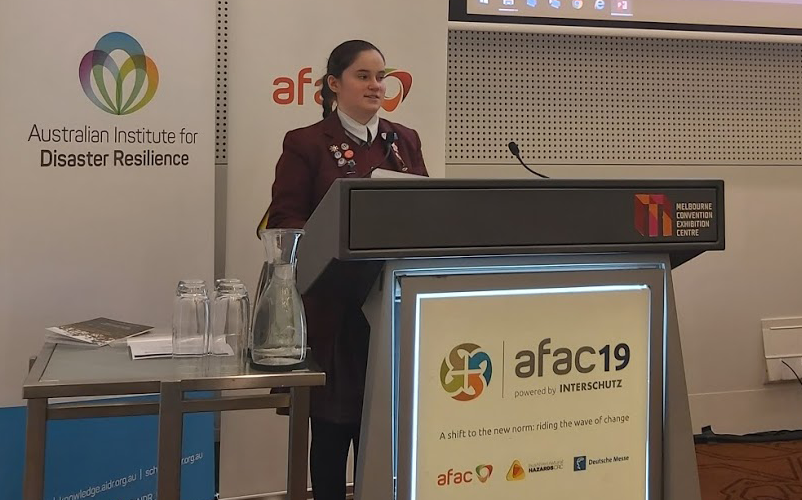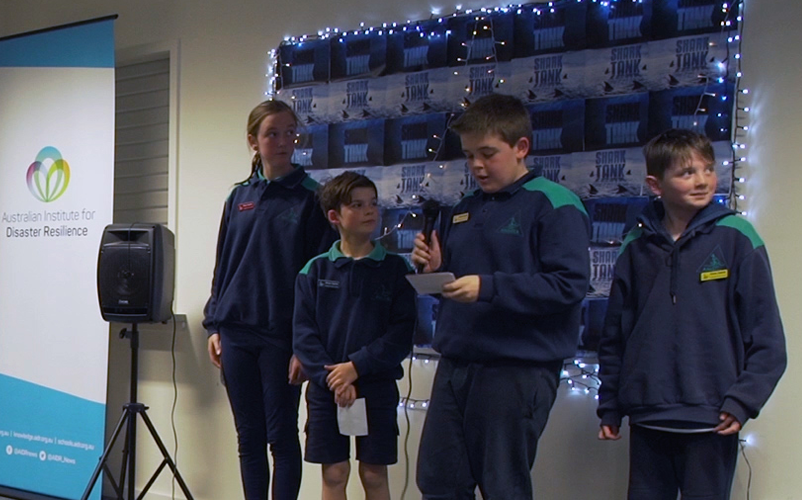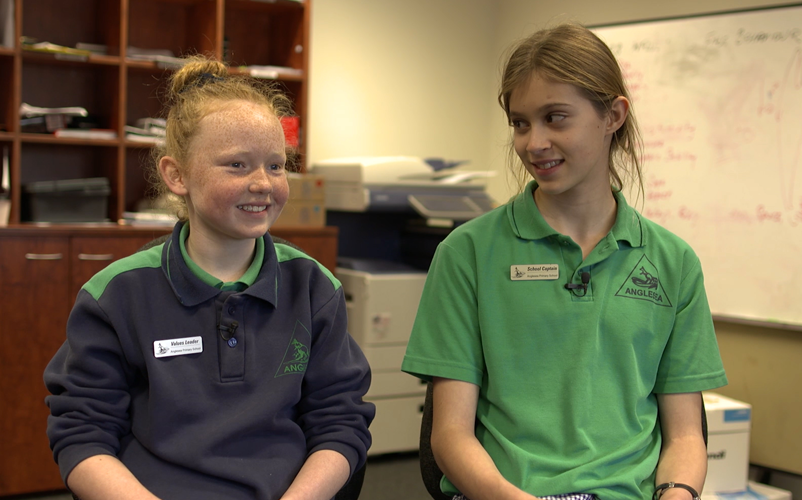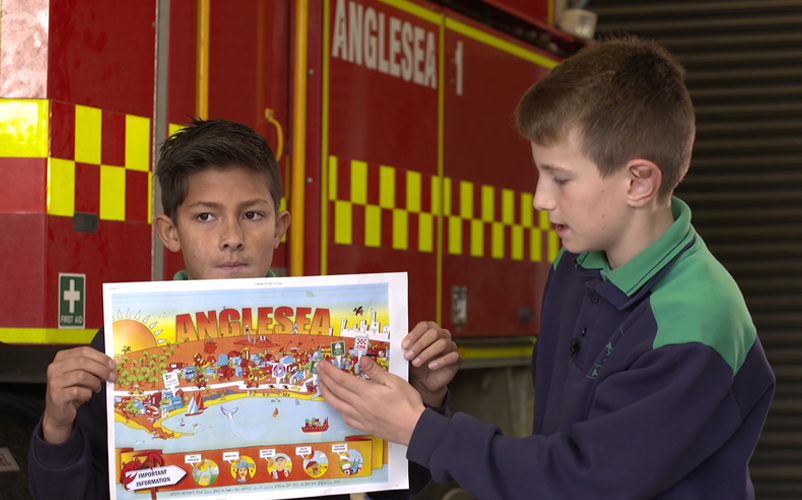Disaster resilience education enables students to develop the knowledge and skills to take protective action before, during and after an emergency or disaster.
The Australian Institute for Disaster Resilience (AIDR) promotes a model for learning about natural hazards that brings students and teachers together with experts in hazard management to explore risks in their local environment and identify opportunities to enhance community resilience.
There are many opportunities to address disaster resilience in the classroom, particularly through the Australian curriculum learning areas of geography, science and health.1 Increasingly, schools are taking an integrated approach to the study of hazards and emergencies through STEM-based (Science, Technology, Engineering and Mathematics) projects. Learning through STEM involves designing solutions to real-world problems, which is where learning about natural hazards becomes disaster resilience education.

Marymede Catholic College student presents at National DRANZSEN forum.
Image: Australian Institute for Disaster Resilience
The Education for Young People program is supported by a vibrant network of over 600 representatives from schools and education authorities; lifesaving and emergency service agencies; state and local government departments; community, environmental and wellbeing-focused organisations; research institutions and others. The Disaster Resilient Australia New Zealand School Education Network (DRANZSEN) supports and promotes action-oriented, collaborative disaster resilience education initiatives across Australia. These are showcased in the program newsletter and at dedicated network events.

Anglesea Primary School students present bushfire safety initiatives to the ‘Shark Tank’ community panel.
Image: Australian Institute for Disaster Resilience
Partnerships for learning: Survive and Thrive at Anglesea Primary
The Survive and Thrive program is a partnership between Anglesea Primary School and the Anglesea Country Fire Authority. This initiative continues to evolve and demonstrates an excellent model of learning and action for community resilience. AIDR filmed a case study of this initiative during 2019, where students showcased their innovative solutions to local hazard-related challenges. These solutions were presented to the community for endorsement and implementation.

Anglesea Primary School students share their knowledge of bushfires.
Image: Australian Institute for Disaster Resilience

Anglesea Primary School students created a map of Anglesea showing fire ‘safe spots’.
Image: Australian Institute for Disaster Resilience
Supporting schools in recovery: Black Summer fires
The bushfire crisis over the 2019–2020 Australian summer was distressing for young people, educators and communities. In recognition of this, AIDR, Emerging Minds and the National Workforce Centre for Child Mental Health came together to develop some initial guidance for teachers on the return to school. The guidance document provides a simple list of tips to support student wellbeing in bushfire-affected communities, facilitate classroom conversations about bushfire and acknowledge the impact of widespread media coverage of the bushfires on the student population.
Youth voice and participation
The Education for Young People program champions youth voices and participation in disaster risk reduction. In June 2020, AIDR will work alongside national and regional humanitarian agencies to enable young Australians to engage with decision-makers at the Asia-Pacific Ministerial Conference for Disaster Risk Reduction.
Before the conference, AIDR and World Vision led the development of a youth survey on climate change and disaster risk. The results of this survey will be compiled with others from across the Asia-Pacific region and presented in a report at a special pre-conference event in Brisbane, where young delegates will have the opportunity to develop their own recommendations for action.
Education sector engagement
AIDR continues to engage with education authorities through professional teacher associations and networks with a focus on STEM and student voice. Climate change and extreme-weather-related hazards continue to dominate the agenda for engagement in disaster resilience education, reflecting concerns about this high-profile issue at a local, national and global scale. Young people, gathering in large numbers across the country continue to support the Schools Strike 4 Climate movement, stand to be disproportionately affected by the effects of climate change and are leading the call for action to ensure a safe, sustainable future for Australian communities and the planet.


